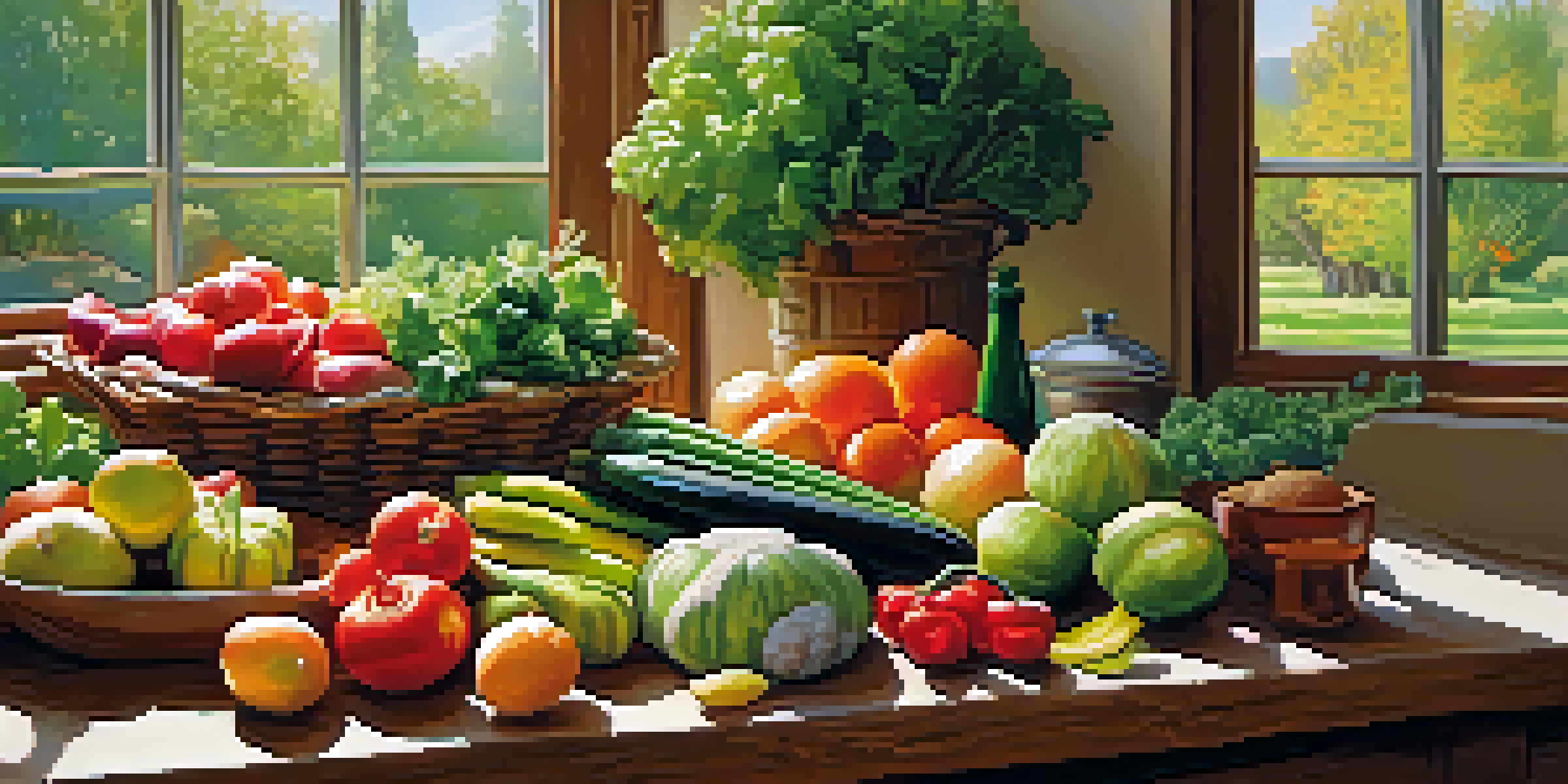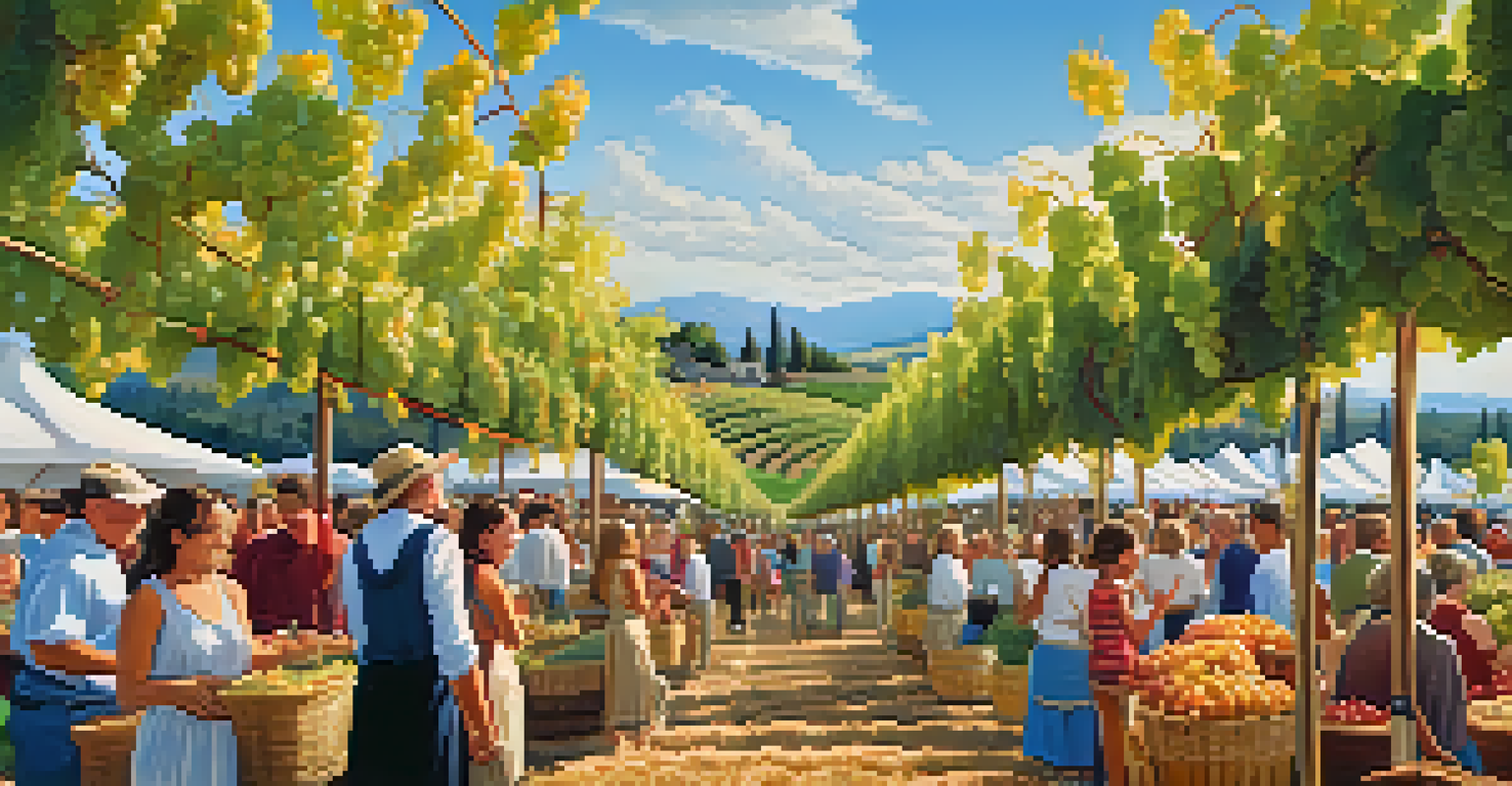Farm-to-Table Experiences: Culinary Tours in California

Understanding the Farm-to-Table Movement
The farm-to-table movement emphasizes sourcing food directly from local farms. This approach not only supports local economies but also ensures fresher, seasonal ingredients. By connecting consumers with producers, it fosters a sense of community and encourages sustainable practices.
The farm-to-table movement is more than just a trend; it's a way to reconnect with our food, our farmers, and our communities.
In California, this movement has gained significant traction, with its vast agricultural landscape providing a wealth of options. Chefs and restaurants are increasingly dedicated to showcasing local produce, meats, and dairy, creating menus that change with the seasons. This commitment to local sourcing enriches the dining experience and nurtures a deeper appreciation for food.
Moreover, the farm-to-table philosophy extends beyond just restaurants; it encompasses various culinary tours that immerse participants in the process of food production. These experiences allow food lovers to witness how their meals are made, building a connection between the plate and the farm.
Top Regions for Culinary Tours in California
California boasts diverse regions that offer unique culinary tours, each highlighting local flavors and farming practices. From the coastal bounty of Monterey to the picturesque vineyards of Napa Valley, each area presents its own distinct culinary identity. This variety allows food enthusiasts to explore different aspects of California's agricultural heritage.

In the Central Valley, known as the breadbasket of America, visitors can engage in tours that showcase everything from almonds to tomatoes. Meanwhile, Southern California offers tours that highlight organic farming and sustainable practices in the San Diego region. Each tour provides a unique lens through which to view the state's rich agricultural tapestry.
Support Local with Farm-to-Table
The farm-to-table movement connects consumers with local farms, promoting fresher ingredients and supporting local economies.
No matter where you go, each region's culinary tours provide not just food tastings but also stories from the farmers and chefs who work tirelessly to bring these ingredients to your table. This adds a personal touch that elevates the entire experience.
Hands-On Experiences: Cooking Classes and Workshops
Many culinary tours in California offer hands-on experiences like cooking classes and workshops, allowing participants to actively engage with the food they learn about. These interactive sessions often take place on farms or in local kitchens, where chefs share their culinary secrets and techniques. It's an excellent opportunity to learn about local ingredients while having fun.
Eating locally not only nourishes the body but also supports the community and environment.
For example, some tours might include a guided foraging experience followed by a cooking class that incorporates those freshly foraged ingredients. Participants can create dishes that reflect the local cuisine, deepening their understanding of farm-to-table principles. It’s a rewarding way to see the journey of food, from field to fork.
These classes not only enhance culinary skills but also foster a sense of connection to the food. By cooking with fresh, local produce, participants gain a profound appreciation for the effort that goes into growing and preparing their meals.
Meet the Farmers: Connecting with Local Producers
One of the highlights of farm-to-table experiences is the opportunity to meet the farmers behind the food. Many tours incorporate visits to local farms, where guests can engage in discussions about sustainable practices and the challenges of farming. This firsthand knowledge enhances the overall experience and creates a personal connection to the food.
Farmers often share their passion for their craft, explaining how they grow their produce and raise livestock. Such interactions provide insight into the hard work and dedication that goes into each ingredient, fostering respect for the food we consume. This depth of understanding elevates the meal, making it more than just sustenance.
Engaging Culinary Tours in California
California offers diverse culinary tours that provide hands-on experiences, allowing participants to explore local flavors and farming practices.
Moreover, these connections often lead to lifelong relationships between consumers and producers. Guests may leave with a sense of loyalty to the farmers they meet, choosing to support local products long after the tour concludes.
Seasonal Events and Festivals Celebrating Local Cuisine
California hosts numerous seasonal events and festivals that celebrate local cuisine, providing an excellent backdrop for culinary tours. From harvest festivals to food and wine pairings, these events spotlight the diversity of the state's agricultural offerings. Attending these celebrations can enhance any farmer's market or culinary tour experience.
For instance, the Gilroy Garlic Festival showcases the region’s famous garlic, featuring cooking demonstrations, tastings, and local vendors. Such events not only highlight specific ingredients but also bring communities together to celebrate their local culture and traditions. It’s a vibrant way to experience California's culinary scene.
Participating in these festivals allows guests to sample various dishes and engage with local chefs and artisans. This immersive experience offers a deeper appreciation for the flavors and ingredients that define California's rich culinary landscape.
Sustainable Practices in Farm-to-Table Tours
Sustainability is a core principle of the farm-to-table movement, and many culinary tours in California prioritize eco-friendly practices. From organic farming methods to waste reduction initiatives, these tours often highlight the importance of preserving the environment. This commitment resonates with participants who are increasingly concerned about the impact of their food choices on the planet.
Many farms involved in culinary tours employ sustainable practices such as crop rotation, permaculture, and organic farming. These methods not only produce high-quality ingredients but also protect biodiversity and improve soil health. By supporting these farms, participants contribute to a healthier ecosystem.
Sustainable Practices Enhance Tours
Many culinary tours prioritize sustainable practices, educating participants about the importance of eco-friendly farming methods and responsible food choices.
Tour operators also focus on minimizing their carbon footprint by using local transportation and reducing plastic waste. This dedication to sustainability enhances the experience, allowing guests to enjoy delicious meals while knowing they’re making responsible choices.
Planning Your Farm-to-Table Culinary Tour
Planning a farm-to-table culinary tour in California is an exciting adventure that begins with research. Consider what regions or themes appeal to you, whether it’s wine country, coastal cuisine, or artisanal cheeses. Exploring different options allows you to tailor your experience to your tastes and interests.
Many tour companies offer packages that include visits to farms, cooking classes, and tastings. Be sure to read reviews and check for any seasonal offerings or special events that might align with your visit. Flexibility is key, as some experiences may vary based on the time of year and availability.

Don’t forget to ask questions when booking your tour. Understanding what each experience includes can help ensure you get the most out of your culinary journey. With a little planning, you’ll be ready to savor the flavors of California’s vibrant farm-to-table scene.